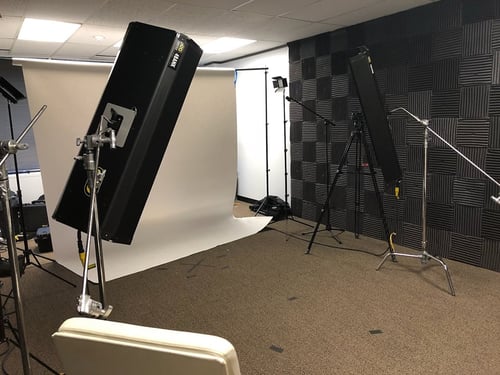First off, if you’re reading this article — thank you! We’re always excited for the opportunity to share a customer success story, as few things in marketing are more powerful than information passed on by word-of-mouth. Not only does it help us tell an authentic story about a product or service, but it’s also incredibly validating to hear positive feedback from someone outside of the office.
Keep in mind that if you haven’t had a lot of experience being on camera, no worries at all! We don’t need actors, we need real people. With that, it never hurts to mentally prepare and have a few ideas ready ahead of time. So here are some best practices along with what to expect in the process of creating a video testimonial.
Relax & Be Yourself
Again, there’s no pressure at all! We’re confident that you have a great story to tell, and that you’ll do great on camera. Trust us, companies don’t ask people they think will freeze up or tell a not-so-compelling story. Being asked is basically a form of flattery. So relax and be yourself.
Our goal is to have a candid, unscripted conversation with you. This is our chance to step out of the marketing box and into real life. Imagine that you’re at a casual event or maybe even a party. Customers want to see and hear real people talk about your experience with the company or product truthfully, and the more natural it feels, the more successful the video will be at conveying how you feel. If you’re concerned about the free-flow conversation, we can easily ask a few questions that will help share your story.
Tell a Short Story
It is a good idea to have a storyline in mind before we begin the conversation. Everyone loves a good story, and your testimonial video is a way to tell people who you are and the problem you were facing before being introduced to produce/service. Think about it in terms of a beginning, middle and end. Share how you felt through-out the process and what emotions you had. Did you feel nervous or have any suspicion that was put to ease? Rather than listing characteristics or attributes, consider what benefits the product/service brought to you. Think “saved me time” or “gave me easy access.”
What to Expect
In our office, we have a dedicated video production room where we will bring you to film. You’ll have some time to get a drink, freshen up or use the restroom before we get started. Once you’re comfortable, you will sit down with our video director one-on-one who will guide you step-by-step through the filming process.
We’ll do our best to keep things sweet and simple. The video director will offer feedback where needed and may ask you the same question twice, just to hear you answer it different ways. Just remember that feedback isn’t a reflection of you, it’s just notes of how of how the shot can improve. Your director just wants to make sure you look and sound your best, so they will always take a safety shot even if you nail it the first time.

It can be a bit exhausting to be on camera. Even professionals need to remind themselves to boost up the energy. If you find yourself feeling a little sluggish, take a break. Just dance, jump, or skip. Something physical to distract your brain. Exercise can be a great way revive the conversation, especially if you’ve been sitting or standing for a long period of time.
Questions to Keep in Mind
As mentioned, we want to remaining unscripted during the video shoot. But we may use questions to help probe you along in telling your story. Here’s an idea on what type of questions to expect.
1. What is your name, company, and relationship or service with the [xyz] client?
2. What challenge did you company face, and how did they help you overcome that?
3. What would have been the implications, had [xyz] not been there and provided solutions?
4. What was the ultimate outcome in working with company [xyz]?
5. Where do they succeed where others are lacking? (competitive advantages)
6. What are the most important aspects of YOUR business & services? How does [xyz] help or improve your business?
7. What do you see as company [xyz] strengths? (core values & benefits)
What to Wear
When it comes to your wardrobe, there’s no need to dress up more than your regular attire. We want you to look like you!
There are just a few things that will help us with the technicalities of video, like sticking to solid colors since patterns can play tricks with the camera. However, also try to avoid wearing solid black, white, or a highly saturated color such as red. When conducting color correction during the editing phase these colors can make the editor’s job much more difficult.
If you wear make-up, it’s helpful to bring it along just in case you need touch-ups during the shoot. As for glasses, let the director know. They might need to adjust the lighting to reduce glare. And for jewelry, less is always better. You don’t want to distract the viewer from your face, and second, sometimes the mic can pick up the sound of it jingling, which can be a challenge for the audio editor.
• •
In the end, all of the best practices above come down to one thing: authenticity. So don’t be afraid to ask us any questions at all and remember to just be yourself. It will be fun… we promise!
Looking for inspiration? You can watch a couple examples of testimonials we have created here.



Leave A Comment